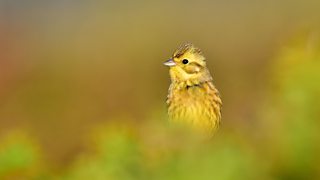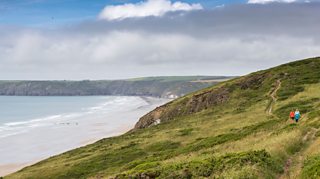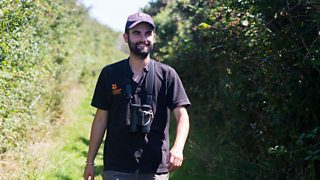By James Roden, Area Ranger for National Trust, Pembrokeshire

‘Close to a hill of ants where Cowslips bloom - And shed o'er meadows far their sweet perfume. - In early spring, when winds blow chilly cold, - The Yellowhammer, trailing grass will come,- To fix a place and choose an early home, With Yellow breast and head of solid gold.’
John Clare wrote these words about the yellowhammer - the unmistakeable golden bird that was once a common sight in our fields and on our hedgerows. It’s now rapidly disappearing.
And it’s not the only one. Farmland birds are one of the fastest declining groups in the UK. The group has seen a 56% loss since 1970, largely due to modern intensive farming methods, fewer hay meadows and the removal of hedgerows. They are particularly vulnerable in winter when less food is available.
That’s why I’m stood still in the middle of a field on a cold morning in January, clipboard in hand, eyes peeled, listening for any faint chirp or tweet.

This is the second year the . From November to February, a team of 30 volunteers – aged 21 to 75 – as well as Trust rangers and tenants, survey 11 of our farms in North Pembrokeshire to see how farmland birds are faring.
Results from the 2018 survey were promising – we counted more than 22,000 birds and 64 different species, including skylark and lapwing.
But that hasn’t happened by chance. For the last few years the National Trust has changed the way we farm this beautiful part of the Welsh coast. We’ve been resting fields to allow wildflowers to thrive, leaving some fields and margins unsprayed and sowing wild bird cover crops to provide a vital food source through the winter.
A step back in time
A trip to one of these farms – Folkeston, on the Southwood Estate - is like stepping back in time. Tucked away in West Wales this farm has survived the worst ravages of modern agriculture. The hedgerows are vibrant with birds and in summer the ancient meadows are alive with colour and the buzz of insects. It is a place that lifts our spirits and provide hope for the future.
Here, the bird with the ‘Yellow breast and head of solid gold’ is making a comeback. Thirteen pairs of yellowhammer have been recorded on the farm – making it one of the largest single populations in the region.

But we’re not being complacent. Folkeston is a much-needed haven for wildlife. We need to enhance and protect precious places like this one, making them more resilient and helping the wildlife grow and spread to the surrounding countryside.
Working together
We also can’t do it alone. So we’re working with partner organisations, farmers and local communities to create bigger, better places for wildlife.
Time will tell, but I hope that with their help, the support of our tenant farmers, and the many hours put in by our hardy volunteers - in early spring, as John Clare wrote, ‘The Yellowhammer, trailing grass will come’.
